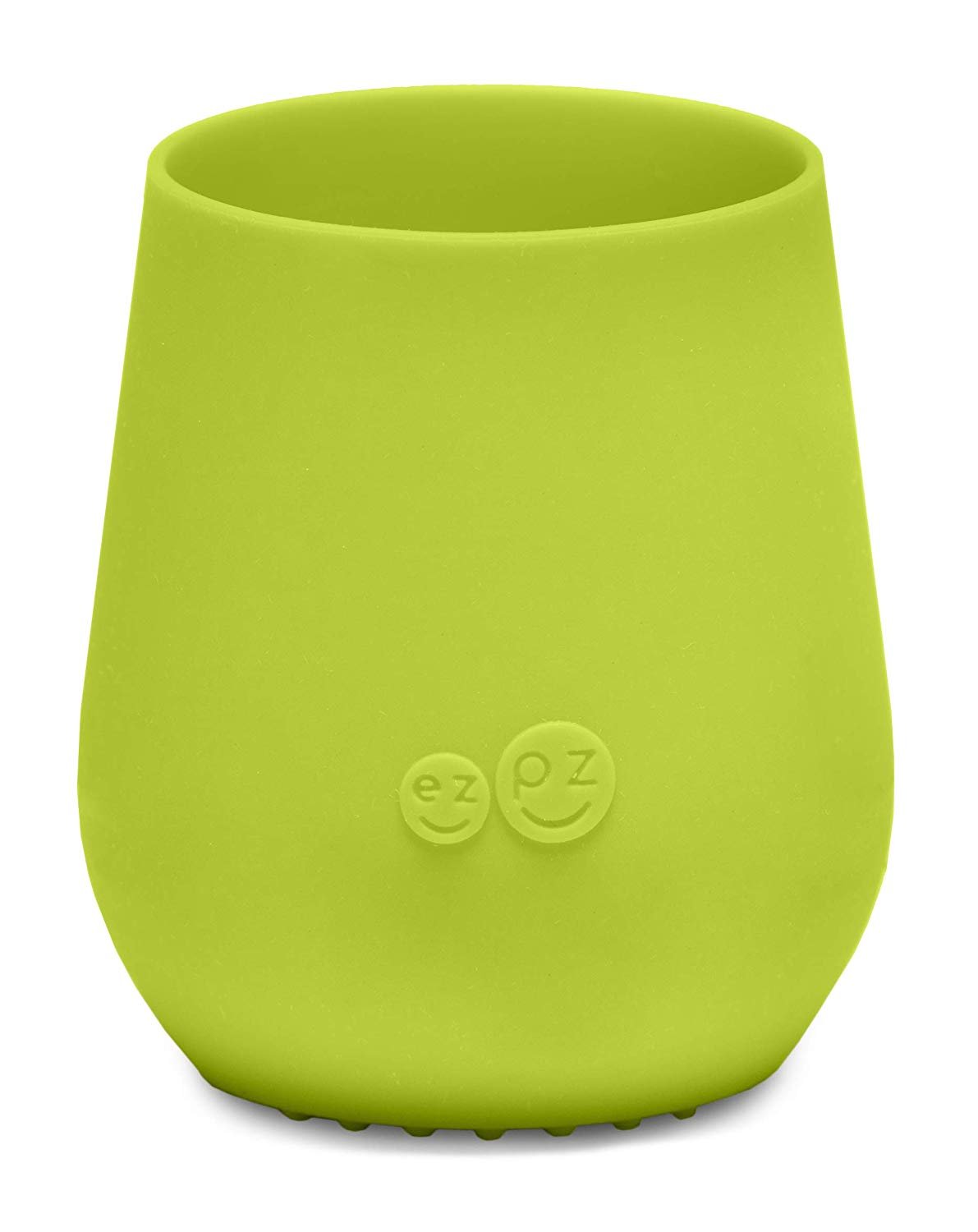Table of Contents[Hide][Show]
I see it all too often: Mom or Dad bring in their toddler for their first visit to the dentist, and I have to break the news to them that their toddler has several cavities.
Just because baby teeth fall out doesn’t mean cavities are okay for the baby teeth. Cavities in baby teeth can absolutely affect the adult teeth, as well as the size of the oral cavity later on in development.
These same toddlers who grew up on sippy cups tend to grow up to be teenagers with speech issues or complicated orthodontic cases — requiring more than your typical orthodontic treatment.
Because sippy cups prevent spills, they’re often seen as a great solution for toddlers learning how to drink, but the long-term damage they do just isn’t worth the convenience.
Why I don’t recommend sippy cups to parents:
Sippy cups prevent normal development of the mouth. Sucking from a sippy cup, bottle feeding and suckling a mother’s breast is not all equal. The motor activity of suckling a breast allows the child’s oral cavity to develop properly.
A nipple is soft and deforms when the child sucks on it — it takes a different shape inside the mouth of the child and helps promote proper development of all the oral structures, including jawbone, palate, teeth, and oral cavity. It has the child learn the proper motor function of the tongue.
Sucking on a rigid piece of plastic doesn’t allow for this and can actually misshape the oral cavity and result in problems later in life like speech, airway, sleep quality, and facial form and aesthetics.
Sippy cups cause tooth decay and cavities. Sucking on a sippy cup that contains fruit juice, milk, or any drink containing natural sugars, for long periods of time, can leave sugars and acids on your child’s teeth. This will ultimately erode the enamel on the teeth, and your child may be in for a lifetime of dental woes. Any beverage besides water — like milk, fruit juice, or soda — should be consumed during a limited time period as opposed to throughout the day. Have your child rinse with water right after and wait at least 30 minutes before brushing.
Or, better yet, only give your child water to drink. High pH water tastes better than low pH water if you want to get your child hooked on the taste. Instead of apple juice, give your kid an apple!
Sippy cups predispose kids to adult obesity. Sippy cups simply don’t teach kids the right habits. For toddlers, sippy cups are like a security blanket, and they often refuse to be without one. At a young age, we’re getting our kids in the habit of having a sugary drink by their side at every meal, or even all day long. Many of my adult patients and I discuss how they sit at work with a Coke can nearby during stressful periods, sipping it all day long — the adult version of the sippy cup comfort drink!
Get Dr. B’s Dental Health Tips
Free weekly dental health advice in your inbox, plus 10 Insider Secrets to Dental Care as a free download when you sign up

Here’s my recommendation to parents:
Breastfeed as long as possible. I realize this isn’t possible in all cases, but if this option is available to you, it is certainly the best prevention method out there.
Toss the sippy cup. After breastfeeding your child (if possible) bypass the sippy cup. Use a BPA-free plastic, stainless steel, hard resin glass, or a silicone cup with a round lip instead. Only fill it up part of the way to reduce spillage.
Best for Little Mouths
I get many questions about straws — in general, straws are far less problematic than a sippy cup. However, I’d recommend alternating between straws and open-mouthed drinking when possible. For instance, if messes are a concern, like when you’re out to eat, opt for a straw.
Make water the default. Kids don’t need apple juice to be healthy. Juices aren’t that healthy — they’re concentrated in sugar and low in nutrition. It’s much better to eat an apple and drink water instead of drinking the juice. Make sure your kids learn to appreciate the taste of a delicious glass of water.
Roll up the carpets. Roll them up for a few months and teach your child to drink out of a BPA-free plastic hard resin glass. If they spill water, it’s no big deal, and they will learn. You might even be surprised at how quickly they learn — even as quickly as within a few days.
Take the cup away once your child is finished drinking. Meal time is meal time. Don’t use sippy cups and sugary drinks to comfort a distressed child or to replace a meal. Kids don’t need to be constantly surrounded by sugary juices and snacks — doing so can help them develop an unhealthy dependence on snacking and food as comfort. We just don’t need a super sized drink in front of us at all times.
Two handles are better than one. The goal of the transition is to make the child feel comfortable enough to grasp an adult-sized cup. Since larger cups require the use of two hands, it is better for the child to get into this habit early.
Limit sugary drinks to during or after mealtime. If your child must have sugary liquids like apple juice and milk, let them have them at mealtime, when saliva production is at its highest levels and the presence of foods can lower pH levels to prevent tooth decay. If your kids want apple juice, dilute it with water.
The sippy cup effect is probably best explained by an experience I had a few years ago in my private practice in Sunnyvale, where I examined a child patient who had the healthiest and best developed mouth and teeth that I’ve ever seen.
He was an Eritrean boy about 4 or 5 years old who had just moved to the US with his family. He was in my office for his mandatory dental exam before beginning school. He walked in with a beautiful, bright smile. He had never been to the dentist before. While his mother filled out the forms, I began the examination.
His mouth was one of the most beautiful I’ve ever seen. He had wide arches and a vaulted palate and beautiful teeth with no crowding and a perfect bite. He a textbook-perfect wide open airway and swallow reflex. He had no cavities and passed his examination with flying colors.
When I told the boy he was finished, he smiled, thanked me, jumped out of the chair, ran to his mother’s lap, threw up her blouse, and latched on. His mother thought nothing of it, and we continued our conversation.
It was a remarkable contrast to any child I’ve seen in Western society. This boy had never seen a pacifier nor a sippy cup in his life, yet he was blessed with a perfectly developed oral cavity and set up for optimal oral health for life.
Dr. Mark Burhenne DDS
Mouth Breathing: What Every Parent Needs to Know

 What is Plaque and Why Is It Harmful?
What is Plaque and Why Is It Harmful?